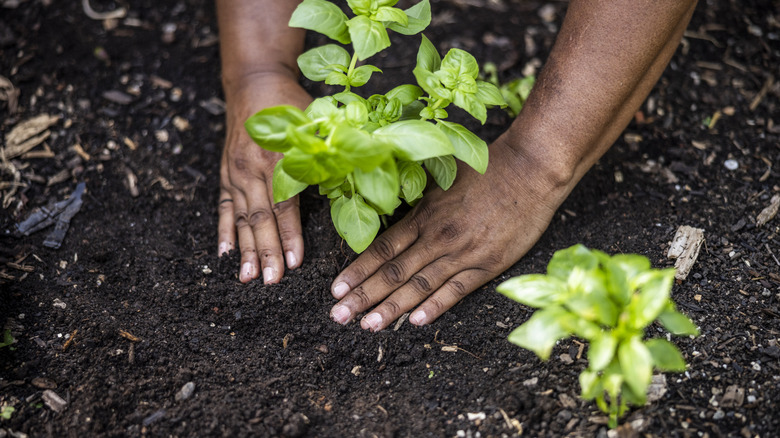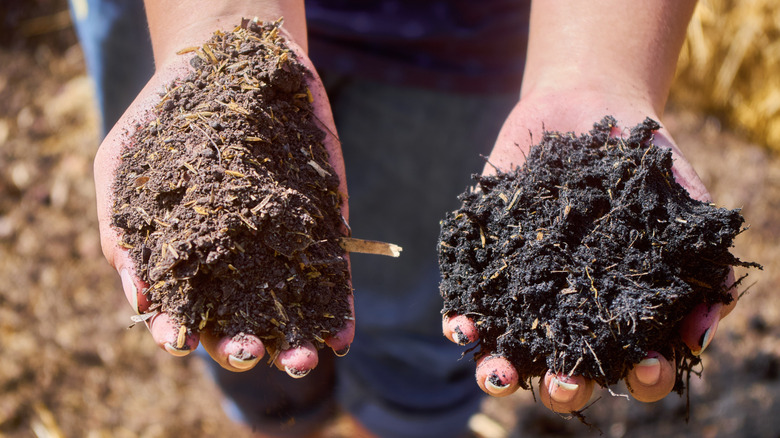Potting Soil Vs Garden Soil: What's The Difference? (Plus, How To Choose The Right One)
A healthy garden begins in the ground, so avoid making the mistake of selecting the wrong soil for your plants. Whether you're planting a houseplant or a vegetable garden, starting with commercial potting soils and garden soils is an easy way to set your garden up for success. While potting soil and garden soil are often used interchangeably, they are distinct types of soil that serve different purposes. Using the wrong one can lead to problems like waterlogged roots.
Potting soil is a man-made product. Contrary to its name, it does not contain any soil. Instead, it's made up of a blend of organic and synthetic materials like peat moss, perlite, and wood chips. These materials retain moisture in enclosed spaces while allowing for drainage, keeping potted plants from becoming over or underwatered. Potting soil is also sterile, meaning it contains no bacteria. This is especially helpful for maintaining a cleaner and healthier home when growing indoor plants.
Garden soil, on the other hand, is a natural product that typically consists of soil, natural fertilizers, and organic substances like wood chips. These materials retain moisture well and contain bacteria and microorganisms that are beneficial to outdoor soil.
When to use potting soil or garden soil in your garden
Like the name suggests, potting soil is well-suited to your container garden, whether it's kept indoors or outdoors. Choosing the right potting soil for your plants is simple, as many commercial potting soils are formulated with the right nutrients for a variety of plants, from cacti to tropical flowers. You can find these soils labeled as such or choose an all-purpose potting soil.
Since garden soil retains a lot of moisture, it's best suited for outdoor gardens planted directly in the ground, including raised garden beds. Open gardens allow for adequate drainage. Well-draining soil keeps your plants' roots from rotting. Unlike potting soil, garden soil is too dense and rich to be the only substrate you use in your outdoor garden. Rather, it should be used in addition to the soil in your yard to add essential minerals and nutrients. Plan to top off your garden beds a few times a year with garden soil to replenish those nutrients as your plants use them. This is called amending your soil. A good timeframe for amending the soil is before planting, mid-season, and after blooming or harvest.

